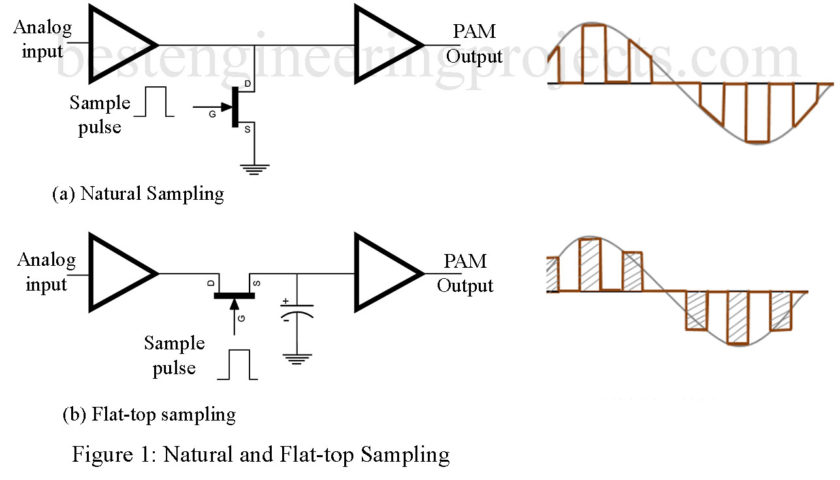The concept of pulse amplitude modulation (PAM) has been introduced in this article. Still, there are a few specifics regarding the creation of pulse amplitude modulated signal at the output of a sample-and-hold circuit that necessitates discussion.
There are two basic sampling techniques used to create a PAM signal. The first is natural sampling. Natural sampling is when the tops of the sampled waveform (the sampled analog input signal) retain their natural shape. An example of natural sampling is shown in figure 1(a). Notice that one side of the analog switch is connected to the ground. When the gate is asserted the JFET will short the signal to the ground, but it will pass the unaltered signal to the output when the gate is not asserted. Note too that there is not a hold capacitor present in the circuit.
The most popular type of sampling used in PAM systems is flat-top sampling. In flat-top sampling, the sample signal voltage is held constant between samples. The method of sampling creates a staircase that tracks the changing input signal. This method is popular because it provides a constant voltage during a window of time for the binary conversion of the input signal to be completed. An example of flat-top sampling is shown in Fig. 1(b). Please note that this is the same type of waveform as shown in Fig. 2(b) of Capabilities and Limitation of Sample and Hold Circuit. With flat-top sampling, the analog switch connects the input signal to the hold capacitor.
